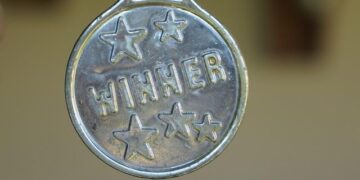History & Culture
Riots. Looting. Defiant acts of… stringing up holly? When Puritans in Parliament banned Christmas, it sparked revolts across England.
ByParissa DJangi
Published December 15, 2023
• 7 min read
On Christmas Day in 1647, a riot broke out in Canterbury, a city 60 miles southeast of London. The inciting event? Mayor William Bridge had ordered the arrest of a shop owner and attempted to clap him in the stockade—all for closing his shop for the holiday.
A crowd of onlookers refused to stand by and do nothing. They attacked Bridge—and then started to riot. They smashed the windows of shops that had remained open for business, looted them, and quickly claimed control of Canterbury. They even captured the city’s magazine, where gunpowder was stored. One of their less violent acts: stringing up holly around town.
The Canterbury Christmas riot was a battle in a war on Christmas that raged in 17th-century England—and Christians were the ones waging it.
A hybrid holiday
Even though Christmas honors the birth of Jesus, early Christians did not celebrate the holiday until the fourth century when pagan traditions—like Rome’s Saturnalia and, eventually, Yule, a Germanic midwinter festival—began to blend with Christian beliefs to create a joyous period of revelry.
By the 16th century, people in England celebrated Christmas for 12 days from December 25 through Epiphany with pageants, feasts, carols, and decorations of holly and candles. Even after England broke from the Catholic Church in 1534 and formed the Protestant Church of England, Christmas continued to be a beloved festive season.
(How Christmas has evolved over the centuries.)
Yet not everyone embraced the spirit of Christmas. Puritans, or Protestants who wanted to purify the Church of England, believed Christmas highlighted everything wrong with the church. They were horrified that people celebrated the holiday with all manner of mischief, such as gambling, sports, and misrule, which included rowdy drinking and role-playing. Christmas merrymaking was too secular, too Catholic, and too pagan for their taste.
“The Puritans were correct when they pointed out—and they pointed it out often—that Christmas was nothing but a pagan festival covered with a Christian veneer,” observed historian Stephen Nissenbaum in his book The Battle for Christmas.
Indeed, the Bible—their ultimate source of religious truth—had no mention of December 25 as Jesus’s birthday, nor did it indicate that his day of birth should be celebrated.
Their loathing for Christmas reached new heights under the reign of King Charles I, who took the throne in 1625. His royal court epitomized the un-holy decadence of the holiday, celebrating Christmas grandly with feasts, music, dancing, plays, and masques.
Outlawing Christmas
Puritans were not the only ones dissatisfied with Charles I, who believed that he was divinely appointed to rule. The king insisted his authority trumped Parliament’s, earning him enemies in that legislative body.
Tensions between crown and Parliament boiled over into civil war in 1642. Royalists took up arms in defense of Charles; Parliamentarians formed their own army. By 1645, Parliamentarians had gained the upper hand—and now they, not the king, governed much of England.
(Inside the Christmas Eve plot to blow up Napoleon.)
Puritans in Parliament used their authority to launch a full-scale assault on Christmas. Among their goals: ensure no religious services happened on Christmas and see to it that December 25 was a working day.
Shutting down churches on Christmas proved to be the simplest course of action. In 1645, Parliament issued Directory of Public Worship, a new text that excluded Christmas as a holiday requiring religious services.
Two years later, Parliament went a step further by banning any and all Christmas celebrations. Parliament even deployed its soldiers to pull down defiantly erected Christmas decorations and break up clandestine services.
Riots for Christmas
Everyday people by and large reacted to Parliament’s Christmas ban with a mixture of disbelief, anger, and defiance.
As in Canterbury, people in several cities took to the streets to protest Parliament’s war on Christmas. Riots erupted in Norwich, Bury St. Edmund, and Ipswich on Christmas day in 1647, as many defied the official ban and tried to compel shop-owners to keep their stores closed for the holiday.
(It’s not just Christmas: Here’s where Valentine’s Day has been forbidden.)
Not all protests turned violent. Writers unleashed the power of the press to criticize and lampoon the ban in pro-Christmas publications such as The World Turned Upside Down and the pamphlet A Vindication of Christmas. Among the latter’s complaints: how Parliament’s ordinance had laid siege on “our high and mighty Christmas-Ale that formerly would knock down Hercules, & trip up the heels of a Giant.”
The ban provided an opening for Royalists, who capitalized on the country’s pro-Christmas sentiment to further their cause. According to historian Jonathan Healey, they “liked to hark back to an old age of warm hospitality and bawdy fun, in contrast to what they saw as the cultural austerity of the Puritan regime.”
Oliver Cromwell comes to power
In 1653, Oliver Cromwell became Lord Protector of the Commonwealth of England, Scotland, and Ireland. Cromwell had been a relatively undistinguished member of Parliament while Charles I ruled, but the civil wars remade him into a military commander and leader of the Parliamentarian cause.
History has often blamed Cromwell, the face of the Protectorate, for outlawing Christmas—but Parliament’s bans pre-dated his rise as Lord Protector. In fact, the most that can be said about Cromwell’s role in the ban is that he chose not to reverse what Parliament had already done.
Cromwell’s death five years later brought England’s republican experiment to an end. Parliament soon invited Charles I’s son to rule as king in 1660, thus restoring the monarchy.
Rebirth of Christmas
King Charles II restored more than just the monarchy. He reopened theaters, revived court culture, and resurrected Christmas in 1660 with familiar traditions such as decking churches with holly. Christmastime games, banquets, dances, and gambling also returned, especially at the royal court.
(How Christmas is celebrated around the world.)
Noted chronicler of 17th-century life Samuel Pepys even marked the return of Christmas in his famous diary. He observed the holiday in 1660 by going to church twice that day, once in the morning and again in the evening after a meal of mutton and chicken. Though Pepys found the evening sermon “dull” and lamented that it “made me sleep,” it was clear the old customs had returned for good.
Parliament’s ban ultimately did little to wrest the Christmas spirit from the hearts of English men and women. But it did something else: It underlined the fact that Christmas has long sat in the crosshairs of politics.
>>> Read full article>>>
Copyright for syndicated content belongs to the linked Source : National Geographic – https://www.nationalgeographic.com/premium/article/christmas-ban-england-puritans-cromwell































